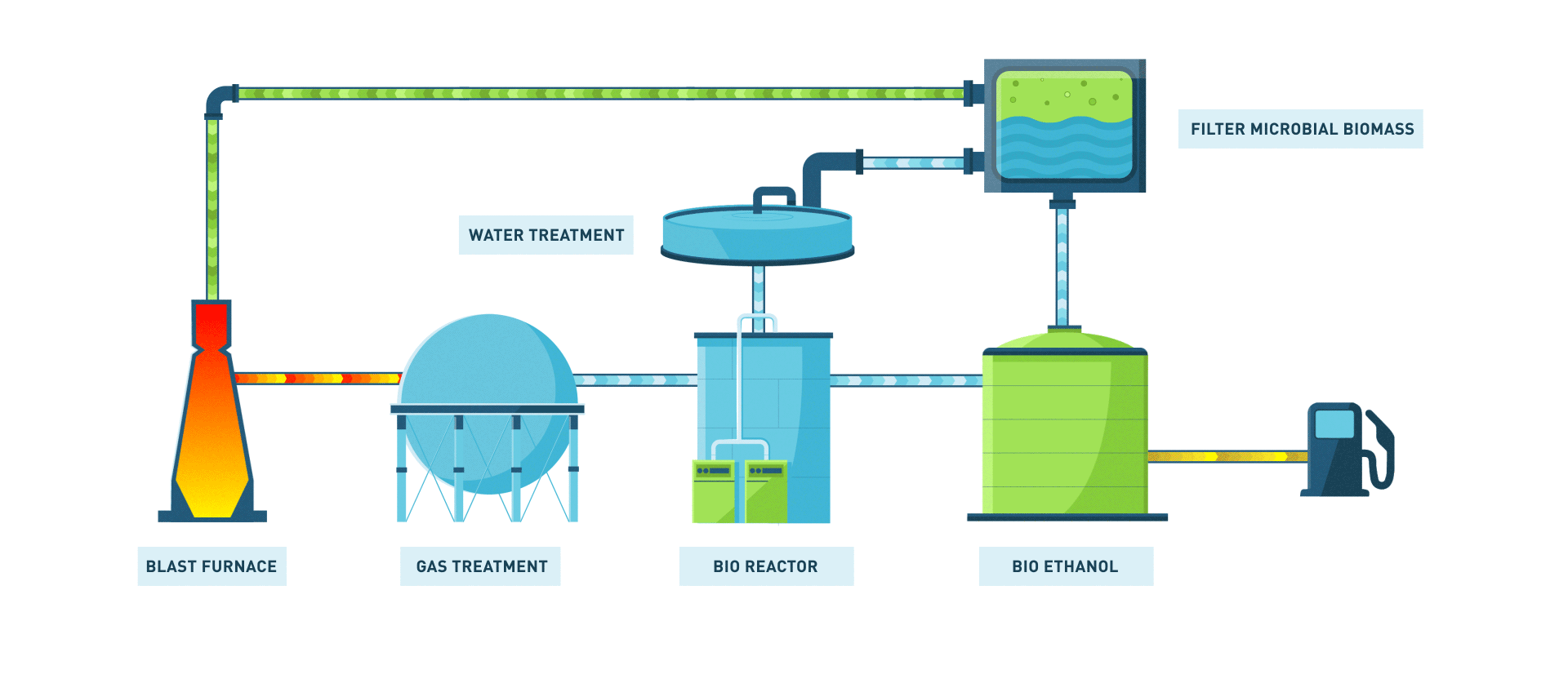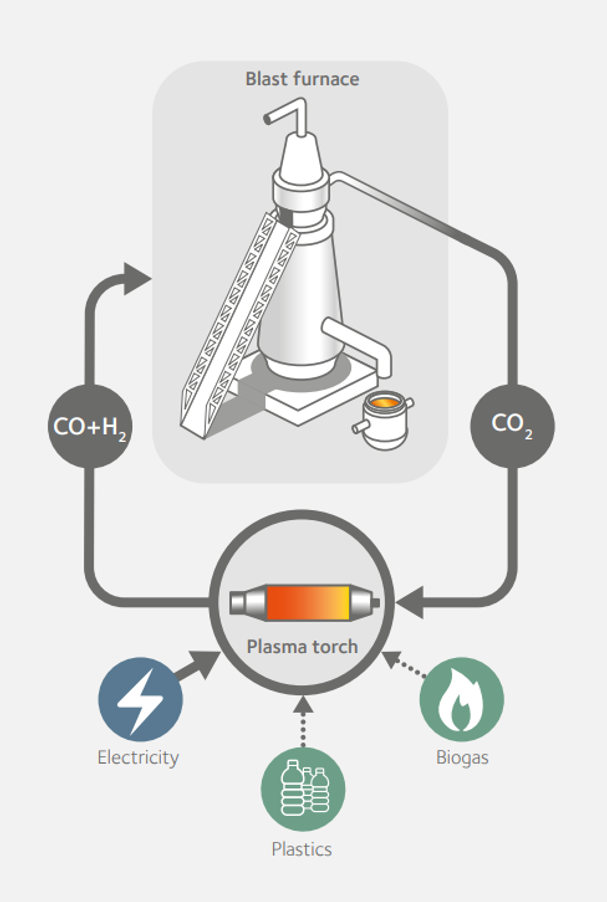Products
Product pages available in
EN - DE - FR - ES
Sustainability
News, events and stories

Circular carbon steelmaking enables ‘waste’ carbon to be used for low emissions steelmaking. The practice utilizes sources of carbon which would otherwise be sent to landfill, burnt, or emitted to the air. Examples include blast furnace gases, waste biomass, and waste wood which has no other use. These sources of carbon can be turned into other products or used as an alternative to coke.
Torero: using biocarbon to fuel the blast furnace
Torrefaction is the name for the thermal process which converts biomass into a coal-like material. The torrefied biomass has significantly better energy output than the original biomass. And it eliminates the need for pulverized coal which will reduce ArcelorMittal’s CO2 emissions
ArcelorMittal is developing a Torero (TORefying wood with Ethanol as a Renewable Output) plant which will convert waste wood into a biocarbon that is suitable for the blast furnaces process. In the early stage, the Torero plant will convert 120,000 tons of waste wood into around 50,000 tons of bio-coal annually. The plant is expected to come onstream by the end of 2020.
As part of the same project, ArcelorMittal Gent is also demonstrating the use of torrefaction. In the Gent blast furnace, carbon from waste biomass is used to replace coal.
The source material is waste wood, typically from demolition sites. Until recently, municipalities in Europe have collected and incinerated this wood.
Torrefaction turns the waste wood into a type of charcoal which is then ground and injected into the blast furnace. Instead of being wasted, the carbon contained the wood is used to make steel. This pilot project will be fully tested before ArcelorMittal looks at options to scale it up to full production.
The Torrero process
IGAR: reforming carbon to reduce iron ore
The IGAR project aims to capture waste CO2 from the blast furnace and convert it into a synthetic gas (syngas) that can be reinjected into the blast furnace in place of fossil fuels in the iron ore reduction process. As the amount of coal and coke needed in steelmaking is reduced, this process helps to reduce CO2 emissions.
The syngas we need is made up of carbon monoxide (CO) and hydrogen (H2). To form this gas, waste CO2 is heated with natural gas (CH4) to very high temperatures using a plasma torch – a process called dry reforming.
In future, we hope to use bio-gas or waste plastics in place of natural gas, furthering the use of circular carbon. And with the plasma torch running on clean power, the entire process provides substantial emission reductions.
The IGAR project has already been through a number of phases. In 2018, our R&D labs in Maizières (France) developed both the specialist metals and refractories needed to overcome the corrosive effects of the high-temperature syngas involved.
Today in Dunkirk, ArcelorMittal is running a €20 million project, supported by the French organization ADEME, to construct a plasma torch. To test-use the hot syngas created by the plasma torch, a pilot project is also running at the same plant.

The IGAR technology
Carbalyst®: Creating bioethanol from waste gases
ArcelorMittal has established a partnership with LanzaTech, a company which specializes in recycling carbon. Together we are building one of the world’s first commercial-scale bioethanol plants. It’s fuel source – waste gas from the steelmaking process at our mill in Ghent (Belgium).
LanzaTech’s technology – known as Carbalyst® – uses a specially selected and naturally occurring microorganism which can gather the energy it needs from carbon monoxide molecules. In return, the microorganism produces bioethanol.
Every ton of bioethanol produced by LanzaTech’s technology effectively replaces five barrels of gasoline, keeping more fossil fuels in the ground for future generations. And fuel made from recycled carbon emits at least 80% less greenhouse gas emissions than conventional gasoline.
 © Steelanol
© Steelanol
The project will cost around €150 million and is scheduled to become operational in mid-2020. The plant will prove that the technology works as intended, and that is commercially viable at this scale. In the future, vehicles produced using steel made at ArcelorMittal Ghent might be powered by waste gas from the very same plant.
Once completed in 2020, the facility will capture around 15 percent of the waste gases available at the plant and convert them into 80 million liters of ethanol per year. That’s enough to power 600 trans-Atlantic flights every year.

The Carbalyst® process






